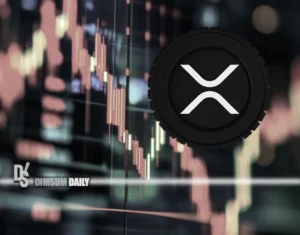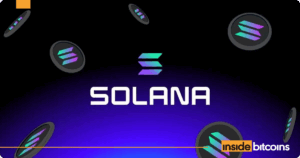Unlocking Value: NFT Loans Revolutionize DeFi Integration Today!

The Rise of Metaverse Finance: A Comprehensive Overview for 2025
In early 2025, college senior Maya stepped into a virtual bank located within a metaverse city built on Ethereum. She was part of a larger trend, as millions of users engage in activities ranging from securing loans in virtual environments to trading digital real estate and earning returns from tokenized NFTs. What once seemed like a futuristic concept is now a common reality for both consumers and institutions. As we delve deeper into this digital landscape, grasping the dynamics of metaverse finance, including its scale, trends, and key players, becomes essential.
- Key Insights into Metaverse Finance
- Who is Investing in the Metaverse?
- Growth Trends in Metaverse Financial Services
- Market Capitalization Insights
- Future Growth Forecast for the Metaverse
- User Engagement in Metaverse Banking and Payments
- Tokenized Assets and Virtual Currency Trends
- Key Sectors Fueling Metaverse Investment
- Leading Platforms in Metaverse Finance
- Regulatory Landscape Impacting Metaverse Finance
- Consumer Engagement with Virtual and Augmented Reality in Transactions
- NFT-Backed Financial Products and Services
- DeFi Integration in the Metaverse
- Public Sentiments Toward the Metaverse
- Risks and Security Challenges in Metaverse Finance
- Geographic Distribution of Metaverse Finance Adoption
- Expert Predictions on the Future of the Metaverse
- Recent Developments in Metaverse Finance
- Conclusion
This report aims to provide insights into the current landscape of metaverse finance, highlighting the most significant figures for 2025.
Key Insights into Metaverse Finance
- $552 billion: The global market value of the metaverse projected for 2025.
- $76 billion: The financial services sector’s contribution to the metaverse, fueled by decentralized finance (DeFi), digital payments, and virtual asset platforms.
- $312 billion: The market capitalization of tokenized assets within metaverse ecosystems, primarily comprising NFTs and stablecoins.
- 70 million users: The estimated number of active participants engaging in financial transactions across major metaverse platforms in Q1 2025.
- $1.2 trillion: The anticipated value of the metaverse economy by 2030, with finance expected to account for nearly 15%.
Who is Investing in the Metaverse?
- Men lead metaverse investments, contributing 11.3% of total funding.
- Major brands follow closely with 10.7%, indicating strong institutional interest.
- Gen Z (ages 10–25) accounts for 9.9%, showcasing early adoption among younger demographics.
- Millennials invest 9.3%, reflecting steady engagement from tech-savvy adults.
- Women contribute 8.6%, nearly matching male participation, indicating a balanced interest across genders.
- High-income households invest 8.4%, while average-income households contribute 7.3%, demonstrating broad socioeconomic involvement.
- Generation Alpha (born after 2012) shows 7.2% interest, hinting at future growth potential.
- Singles allocate 5.6%, slightly more than married couples and families, both at 5.1%.
- Boomers (ages 42–76) exhibit lower interest at 4.2%, reflecting a generational divide.
- Low-income households represent the smallest share at 4.0%, likely due to financial constraints.
Growth Trends in Metaverse Financial Services
- The metaverse financial services sector is projected to grow at a 28.3% CAGR through 2027.
- DeFi protocols within the metaverse have experienced a 42% year-over-year increase in active wallets.
- Peer-to-peer lending platforms in virtual environments recorded a total loan volume of $3.4 billion in Q1 2025.
- The insurance sector in the metaverse is expected to grow by 31.5% YoY, with micro-insurance leading the way.
- Crypto-based payroll systems now support over 19 million workers in the virtual economy.
- 72% of metaverse-native banks facilitate stablecoin settlements.
- The average time to disburse digital loans has decreased by 58%.
- More than 30% of Gen Z users report monthly interactions with a metaverse finance product.
- AI-driven credit scoring has been adopted by over 40% of platforms.
- Virtual hedge funds now manage approximately $11.2 billion in metaverse-specific assets.
Market Capitalization Insights
- The total metaverse market capitalization is estimated at $552 billion as of Q2 2025.
- Financial services account for 13.8%, or about $76 billion, of this valuation.
- The tokenized real estate sector has surpassed $112 billion in valuation.
- Leading metaverse banking tokens, such as METAUSD and BANKVR, collectively hold a market cap of $19.6 billion.
- NFT-backed lending platforms contribute around $6.5 billion to the overall market cap.
- The largest metaverse financial institution, MetaBank DAO, has a token cap of $3.1 billion.
- Stablecoins utilized within the metaverse contribute $88 billion to the broader digital currency valuation.
- The U.S. leads in metaverse financial service capitalization, followed by South Korea and Singapore.
- Publicly traded companies with metaverse finance divisions have experienced an average stock growth of 22% YoY in 2025.
- Regulatory-approved digital banks in metaverse platforms have seen a 14.6% increase in monthly active users.
Future Growth Forecast for the Metaverse
- The metaverse market is expected to grow from $227.05 billion in 2024 to $1,334.18 billion by 2029.
- By 2025, the market is projected to reach $316.34 billion.
- The sector is anticipated to grow at a CAGR of 43.3%, indicating rapid expansion.
- This significant growth underscores the increasing global investment and adoption of metaverse technologies across various industries.
The market is set to nearly sextuple in just five years, signaling a major shift in digital transformation.
User Engagement in Metaverse Banking and Payments
- As of Q2 2025, 70 million users are engaging with metaverse financial services monthly.
- One in three Gen Z consumers in the U.S. regularly uses a metaverse-linked digital wallet.
- 58% of metaverse banking users report utilizing services like savings accounts or crypto yield vaults.
- Over 9.5 million virtual cards have been issued across the top five metaverse financial platforms.
- Daily transaction volume through metaverse-linked payment systems reaches $2.2 billion.
- Virtual salary disbursements are now utilized by over 13 million freelancers globally.
- 72% of U.S.-based users cite financial inclusivity as the primary reason for using metaverse banks.
- Remittances via metaverse platforms have increased by 44% YoY, particularly in Southeast Asia and Latin America.
- More than 320 banks and fintech firms have launched services in at least one virtual world.
- In-world mobile banking interfaces are now standard on AR and VR devices.
Tokenized Assets and Virtual Currency Trends
- The total volume of virtual currencies utilized in metaverse finance surpassed $212 billion in 2025.
- Stablecoins represent 65% of the transactional value in metaverse commerce.
- Over 45% of NFT holders have leveraged their tokens as collateral in financial transactions.
- The top three metaverse tokens—MANA, SAND, and AXS—hold a combined market cap of $31.4 billion.
- Smart contracts for asset rentals in virtual real estate have surged by 93% YoY.
- Gaming tokens now account for 22% of all value flows within metaverse ecosystems.
- More than 1.3 million fractionalized NFTs have been created for asset pooling and resale.
- Central Bank Digital Currencies (CBDCs) have been integrated into at least nine metaverse payment platforms in pilot phases.
- Tokenized treasury bonds in sandboxed environments reached $730 million in issuance.
- A growing segment of users, over 11%, report using metaverse assets as retirement investments.
Key Sectors Fueling Metaverse Investment
- The computer and IT sector leads all industries with 17% of total metaverse investments, highlighting technology’s pivotal role in virtual world development.
- Education follows with 12%, reflecting the increasing adoption of immersive learning technologies.
- The finance sector contributes 11%, showcasing rising interest in virtual banking, crypto services, and blockchain integration.
- Marketing and advertising account for 10%, indicating a shift toward branded virtual experiences and digital product placements.
- The medical and health industries make up 9%, driven by innovations in telehealth, virtual therapy, and simulation training.
- Technology and innovation secure 7%, supporting experimental platforms and next-gen solutions.
- Travel and hospitality invests 6%, tapping into virtual tourism and digital experiences.
- Construction and transportation each represent 5%, leveraging the metaverse for 3D modeling and logistics simulations.
- Customer service ranks last with 4%, yet is beginning to show signs of metaverse-driven support tools and AI agents.
Leading Platforms in Metaverse Finance
- Decentraland, The Sandbox, and Somnium Space remain the top three platforms in terms of transaction volume and user engagement.
- Decentraland leads with over $9.1 billion in annual metaverse finance transactions.
- Somnium Space now supports regulated financial instruments in collaboration with EU firms.
- Binance’s MiniVerse boasts over 600,000 daily active wallets engaged in DeFi activities.
- Meta’s Horizon World has launched its finance layer with embedded token support, achieving 38% adoption in North America.
- NetVRk Finance offers proprietary lending protocols utilized by 2.1 million users monthly.
- Axie Infinity’s Ronin Network processes over $1.3 billion monthly in gaming-linked DeFi transactions.
- Apple’s Vision Pro headset has enabled the integration of financial dApps across four leading virtual environments.
- In 2025, more than 160 new metaverse finance platforms were launched globally.
- Layer 2 protocols dominate, with over 71% of all financial dApps hosted on rollups like Arbitrum and Optimism.
Regulatory Landscape Impacting Metaverse Finance
- In March 2025, the U.S. SEC introduced its first stablecoin governance framework tailored for metaverse platforms.
- 12 countries, including Canada, Singapore, and the UK, now mandate AML compliance for virtual asset transactions.
- FINRA and CFPB jointly released best practices for consumer protection in virtual financial interactions.
- The EU’s MiCAR framework has been extended to include tokenized metaverse securities.
- Japan has launched a regulatory sandbox specifically for metaverse financial products.
- Over 400 metaverse apps have applied for licenses under new fintech laws worldwide.
- DAO governance protocols are now required to publish quarterly transparency reports in select jurisdictions.
- KYC integration is mandatory in 70% of regulated metaverse finance platforms.
- Interchain audits are being standardized to support cross-chain compliance efforts.
- The IMF and World Bank have issued a joint advisory for developing economies on securely integrating metaverse finance.
Consumer Engagement with Virtual and Augmented Reality in Transactions
- 44% of leaders in financial institutions believe that VR/AR transactions will become mainstream after 2030.
- 34% predict this will happen by 2030, indicating growing long-term confidence.
- 13% expect adoption to occur by 2025, suggesting early movers in the space.
- Only 9% believe it will never happen, reflecting a general optimism about future adoption.
- Data shows that 87% of leaders foresee at least 20% of consumers using VR/AR for transactions in the coming decades.
NFT-Backed Financial Products and Services
- Loans collateralized by NFTs reached an outstanding volume of $5.3 billion by mid-2025.
- 1.8 million NFTs were actively used in lending or yield farming contracts across DeFi protocols.
- The average interest rate for NFT loans now stands at 9.4% APR, attributed to risk pooling.
- The launch of NFT-indexed ETFs attracted $740 million in new institutional investments.
- Fractional NFT vaults have grown by 73%, with a total value locked (TVL) of $2.6 billion.
- The insurance sector has issued $460 million worth of policies to cover high-value NFT assets.
- Platforms like Arcade and JPEG’d each processed over $400 million in NFT-backed financial products.
- NFT staking programs now offer average yields of 6.2%, appealing to long-term digital asset holders.
- Over 160 financial dApps support NFTs as integral components for borrowing, collateral, or premium rewards.
- Art-backed NFTs account for 18% of the NFT-based financial services market as of 2025.
DeFi Integration in the Metaverse
- DeFi transactions within metaverse ecosystems totaled $96 billion in the first half of 2025.
- Over 57% of virtual real estate transactions utilize DeFi escrows or smart contract settlements.
- Leading metaverse DeFi platforms report 18.7 million active users monthly.
- Yield farming in virtual environments now constitutes 22% of global DeFi user activity.
- $3.8 billion in liquidity is locked across metaverse-specific DeFi platforms.
- Governance tokens associated with metaverse DAOs experienced an average price increase of 28% in Q2 2025.
- New user onboarding for DeFi through metaverse applications grew by 52% YoY.
- Layer 2 integration has reduced gas fees for metaverse finance users by up to 87%.
- Popular protocols like Aave, Curve, and Uniswap have launched metaverse-optimized frontends.
- Cross-platform liquidity pools now account for 39% of trading volume on multi-world decentralized exchanges (DEXs).
Public Sentiments Toward the Metaverse
- 33% of survey respondents express curiosity about the metaverse, making it the most prevalent sentiment.
- 27% are uninterested, indicating that over a quarter of individuals currently lack engagement.
- 23% express suspicion, highlighting trust issues among a significant portion of the public.
- Both concerned and indifferent groups each account for 19%, reflecting mixed emotional responses.
- 18% feel excited, while 16% are optimistic, indicating moderate enthusiasm.
- 12% report feeling confused, suggesting a need for enhanced public education and clarity.
- Only 7% selected “none of these”, indicating that most individuals have a defined opinion on the metaverse.
Risks and Security Challenges in Metaverse Finance
- Smart contract vulnerabilities resulted in losses of $1.17 billion within metaverse DeFi systems over the past year.
- Phishing scams targeting metaverse wallet users surged by 41% from 2024 to 2025.
- Only 32% of platforms meet cybersecurity standards aligned with ISO/IEC 27001.
- Cases of deepfake-enabled financial impersonation doubled, exceeding 9,000 incidents in 2025.
- Audited protocols experienced 93% fewer losses, yet only 45% of metaverse finance projects undergo comprehensive audits.
- Rug pulls and exit scams in virtual land projects caused $624 million in total damages.
- Credential stuffing attacks on metaverse banking applications increased by 36% year-over-year.
- Regulatory gaps are cited as the primary reason for slow institutional adoption, according to 2025 reports.
- Bug bounties for security vulnerabilities totaled $72 million across more than 50 metaverse projects.
- Blockchain forensics tools now monitor over 70% of major metaverse transaction activities for fraud detection.
Geographic Distribution of Metaverse Finance Adoption
- The U.S. leads in adoption with 21.4 million active metaverse finance users.
- The Asia-Pacific region has 19.6 million users, with notable growth in Japan, South Korea, and India.
- Europe accounts for 15.2 million users, largely driven by regulatory clarity within the EU.
- Latin America exhibits the fastest growth rate, with user numbers increasing by 48% YoY.
- Nigeria and Kenya are emerging leaders in mobile metaverse banking within Africa.
- The UAE and Saudi Arabia are spearheading Middle East adoption through state-backed metaverse finance initiatives.
- Over 60% of metaverse-based remittances originate from developing countries.
- Germany, Switzerland, and Estonia are recognized as top European hubs for virtual asset regulation.
- Singapore and Hong Kong host over 20% of all registered metaverse finance startups in Asia.
- Brazil leads South America in metaverse finance usage, with 5.3 million users in 2025.
Expert Predictions on the Future of the Metaverse
- 68% of technology experts believe the metaverse will reach its peak within the next five years, reflecting strong near-term optimism.
- 15% assert it is already at its highest point, indicating a belief in a current plateau.
- 14% anticipate a boom in the next decade, showing confidence in gradual development.
- Only 3% think it will take more than ten years for the metaverse to gain traction.
- A mere 1% believe it will never experience significant growth, indicating minimal long-term skepticism.
Recent Developments in Metaverse Finance
- The integration of Apple’s Vision Pro with metaverse banking applications was finalized in March 2025.
- Visa and Mastercard now facilitate stablecoin payments within virtual platforms.
- Meta has launched an in-world KYC onboarding hub for verified financial interactions.
- Solana Pay has expanded to cover five leading virtual worlds with sub-second settlement times.
- Chainlink’s Cross-Chain Interoperability Protocol (CCIP) is now a core feature in metaverse finance applications.
- Stripe has rolled out developer APIs specifically for creators of metaverse dApps.
- Goldman Sachs has established its own virtual trading desk, currently in beta with enterprise clients.
- Over 300 new DAOs were formed in Q1 2025 to manage decentralized metaverse economies.
- Epic Games has launched the Unreal MetaPay SDK to embed finance directly into 3D assets.
- The number of GitHub repositories tagged with “metaverse finance” has increased by 132% YoY, indicating active developer interest.
Conclusion
Metaverse finance has evolved from a niche concept to a rapidly expanding sector that merges digital innovation with practical economic applications. From fractionalized NFTs to decentralized insurance in virtual environments, this domain is attracting significant investments, regulatory attention, and user engagement. As we advance into the latter half of the decade, the convergence of Web3, DeFi, and immersive virtual experiences will redefine how individuals bank, invest, and accumulate wealth. For fintech startups and global institutions alike, comprehending the momentum of metaverse finance is crucial for remaining relevant in a future that prioritizes digital interactions.







